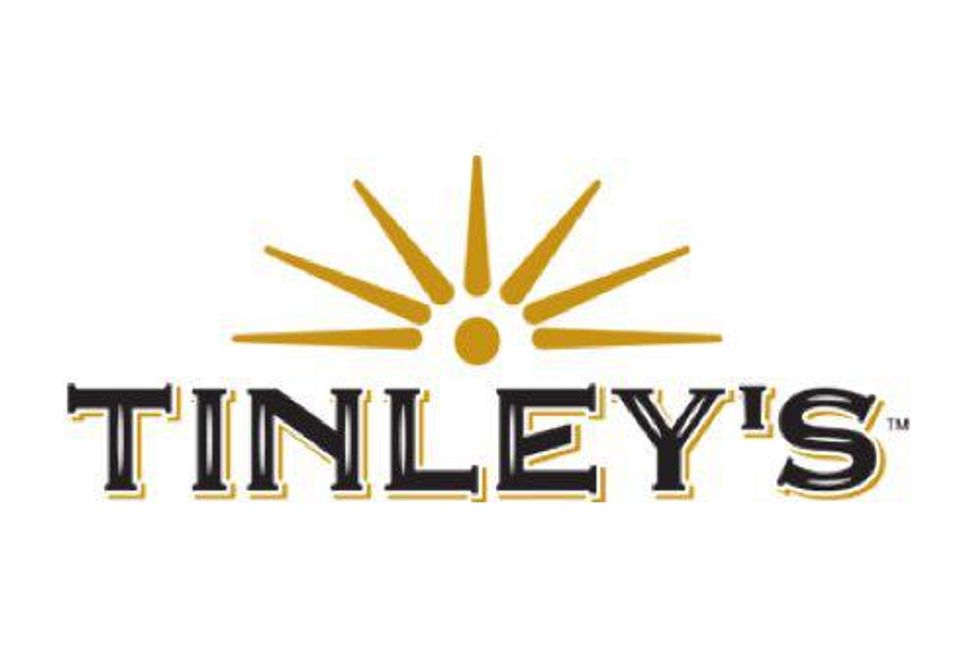Making the Switch: 3 Junior Mining CEOs Explain the Pull of Medical Marijuana

A fair number of junior mining companies have recently made forays into medical marijuana. Resource Investing News spoke with three CEOs whose companies are switching over to that sector in order to find out why they think it’s a viable option.
As those watching the resource space are no doubt aware, during the last few months quite a few junior miners have begun making forays into a new field: medical marijuana.
While many onlookers are pleased with that development, the response has not been wholly positive. Indeed, some — like John Kaiser of Kaiser Research Online — see such such breaks into medical marijuana as merely a last-ditch effort to stay afloat during today’s tough times. “To me it has this smell of an end times type of mentality,” he told the Financial Post in March, “[w]here nothing means anything any more, [and] it’s hopeless to raise money for real stuff in the resource sector.”
To learn more about the medical marijuana space and in particular to gain insight on why junior miners think they can be successful in the industry, Resource Investing News (RIN) got in touch with Yari Nieken, interim president and CEO of Chlormet Technologies (TSXV:CMT); Robert McAllister, president, CEO, secretary, treasurer and director of Enertopia (CSE:TOP); and Chris Bunka, CEO of Lexaria (CSE:LXX).
RIN: What inspired your company to diversify into the medical marijuana industry?
Nieken: Over the last 12 months, the majority of our internal discussions have been on two interrelated topics: the lack of interest in the mining space (investor fatigue) and the lack of companies in the “junior” space with sufficient revenues to continue operations without going to market routinely.
We concluded that we were going to need to look for opportunities where cash flow could be generated in a relatively short period of time and realized that this opportunity might well be outside the mining space. When we became aware of Health Canada’s push to commercialize the production of marijuana in Canada, it was prudent for us to take a closer look at the space.
McAllister: The change in Canadian regulations and the grassroots movement led by individual states in the United States.
Bunka: Every C-level executive owes it to their shareholders to try to create value. If market conditions allow that in one sector and not another, then it is a duty of the executive to at least examine those sectors that can help to create value for shareholders. In addition, the medical marijuana sector gives us the opportunity to create good profits doing something that is good. It is refreshing to be involved in an industry where you can have a positive impact on customers’ lives.
RIN: Do you plan to actually grow marijuana or will you engage in other opportunities surrounding the industry? Why did you choose that path?
Nieken: Our intent is to enter the space as a licensed producer. As it stands currently, we have a letter of intent with a company building out a production facility in London, Ontario called AAA Heidelberg. We currently have a 16.5-percent passive investment in the facility and the opportunity to purchase the remaining 83.5 percent at such a time as the private company secures a licence under Health Canada’s Marihuana for Medical Purposes Regulations (MMPR). We will concentrate on growing marijuana initially, but we can and do assess other opportunities in the space on a regular basis. As the medical marijuana market expands, as is predicted, additional growing space may be required as well.
McAllister: In Canada, our business model is to grow medical marijuana under the Health Canada MMPR program. In the US we are looking at certain states and comparing state legislation to that of the CSA of 1970 to determine what could be the best fit for our company today and moving forward.
Bunka: Lexaria will be engaged in whichever opportunities are permitted by the legislation in force in each jurisdiction. In Canada, that means we plan to grow marijuana; and of course in Canada the legislation forces you to be quite vertical, actually delivering product to the end user.
Laws differ in the various state jurisdictions we are examining in the US, but generally speaking it is not possible for a public company to grow marijuana in the US. However, several individual state markets rival all of Canada in terms of market size; for that reason we intend to be involved in ancillary businesses surrounding the medical marijuana sector in those various jurisdictions.
RIN: How have your shareholders responded?
Nieken: Very positively!
McAllister: Overwhelmingly they have endorsed our move into the MMJ sector.
Bunka: Lexaria was one of the first companies in Canada to announce its intention to enter the medical marijuana sector, in the first week of March. Our shareholders have overwhelmingly given their approval of the move, with our stock price increasing at one point by 1,200 percent in a single day. I have fielded many calls from existing shareholders, and without exception they have been pleased and congratulated us on the move.
RIN: What’s the endgame for your company? Do you plan to shed your mining-related assets and wholly embrace the medical marijuana industry, or split your efforts between the two?
Nieken: If we do complete the current transaction, which we fully anticipate doing if/when AAA Heidelberg receives its license, we will be looking to option out our Chuchi mining property. The 5-percent NPI in the Newton project may or may not be disposed of as well. From the company’s perspective, being engaged in businesses in very different sectors does not lend itself to the management efficiencies that shareholders deserve.
McAllister: We are focused on being a 100-percent MMJ investment opportunity
Bunka: We were in the oil and gas industry. We continue to own a producing, valuable oil field interest in Mississippi that delivers cash flow to our company every month — in fact, over the last three fiscal years, it has delivered roughly $3,550,000 in revenue to us, net of oil field expenses. We will be looking at methods of maximizing the value of that field, and ultimately our core focus going forward is and will be the legal marijuana business.
RIN: Junior miners switching over to medical marijuana are facing some skepticism, primarily, it seems, because people see it as a fad for companies that can’t cut it in the resource world (see cartoon from The Northern Miner). How would you respond to that type of criticism?
Nieken: My comment would be that there is a marked difference between announcing you are looking at opportunities in the medicinal marijuana space or hiring a consultant to assess opportunities in the medicinal marijuana space and actually making real steps to enter the space. Personally, I believe the vast majority of companies saying they are entering the space are just trying to get some promotional mileage and really have no intention of entering the space.
McAllister: One always faces criticism when moving a company’s focus from one sector to another. That being said, the prime goal is for management to provide the best opportunity for the company and shareholders alike by making the company a viable business no matter what sector it is in. At the end of the day, all companies must either find, save or make money to stay alive.
Bunka: There are hundreds — perhaps thousands — of public companies listed in North America involved in exploring for natural resources. By any measure, that is far, far too many companies chasing too few quality assets. More accurate criticism should be directed at the hundreds of small resource companies that have destroyed shareholder value chasing dreams and ideas. The medical marijuana business is already roughly a $2-billion industry in North America, and people who need medical marijuana can have life-changing experiences by having access to it. If Lexaria is successful in developing its business model and providing a medically sound product to customers, then I would say we are delivering a far greater good to the public than just another junior resource company with a dream.
RIN: Medical marijuana seems like a very different ballgame than mining. Will you/your company need to develop a lot of new skills to succeed? (Conversely, what skills you do have that are transferable?)
Nieken: All business is about the funding and execution of a strategy, and much of the success of this execution lies in the ability of managers to engage/hire people who possess a skill set that they themselves lack. It would be ridiculous to say that non-geologists or non-mining engineers could not run a mining company.
McAllister: Many of the skill sets used in the day-to-day running of a public company that is running exploration or drill programs are transferable into building a MMJ business. At the end of the day it comes down to policy, procedures and regulations that have to be followed to move the company forward.
Bunka: It is very new and very young, and a number of new skills are required to succeed. However, the new skills required in the medical marijuana sector are new to everyone! Some old-timer growers say otherwise, but in reality no one in Canada has ever before grown medical marijuana on a commercial scale while being subject to the new, stringent Health Canada requirements. It is brand new. So it is a level playing field.
At the same time, the new requirements for growing are strict, and Lexaria welcomes the high level of oversight and quality required. Lexaria has years of experience dealing with the EPA and other environmental bodies in the US — with the SEC as our primary securities regulator — and with the BCSC and the OSC in Canada, as we are a fully reporting company in Canada as well. Public companies in general are perfect homes for this new industry because prospectus-level disclosure is generally required to succeed with the Health Canada guidelines, and that is something Lexaria is familiar with. We also have a great deal of experience in raising expansion capital, in budgeting and accounting, as well as in corporate governance and policies and procedures — all of these are vital aspects of running a successful business in a highly regulated industry such as medical marijuana.
RIN: What advice do you have for investors trying to evaluate a medical marijuana stock?
Nieken: Before investing, make sure there is a real target company and/or a real plan to bring the business to life and not just hot air.
McAllister: Investors need to understand that in Canada the regulatory process is long and tedious, but very worthwhile at the end of the day as it’s a federally-backed program. In the US the process is far quicker than in Canada in most states. However, federal government and banking in the US are bound by the CSA Act of 1970, which makes growing, cultivating and selling marijuana illegal at the federal level irrespective of individual state initiatives. So one needs to realize the risks and potential consequences in investing in jurisdictions and companies that are going against the CSA Act of 1970.
Bunka: Be wary of valuations where you cannot find comparables. Be sure your grower has more than a single license application underway — what happens if a company with a single license loses that license for any unfortunate reason? Or if a future municipal election revokes authority to grow marijuana? Multiple licenses are the only way to protect investors from potentially huge future losses under these sorts of scenarios. And make sure you understand and trust the management team.
Securities Disclosure: I, Charlotte McLeod, hold no direct investment interest in any company mentioned in this article.
Editorial Disclosure: Interviews conducted by the Investing News Network are edited for clarity. The Investing News Network does not guarantee the accuracy or thoroughness of the information reported. The opinions expressed in these interviews do not reflect the opinions of the Investing News Network and do not constitute investment advice. All readers are encouraged to perform their own due diligence.
Related reading:





